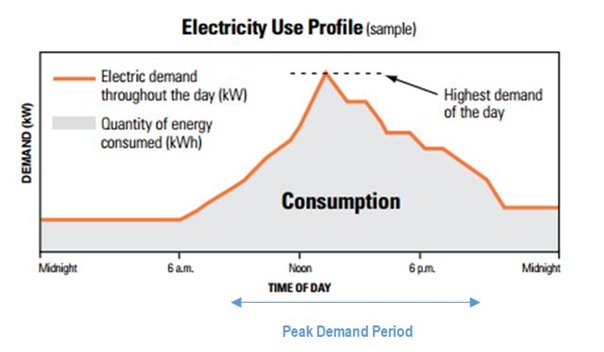Peak kW Calculations in Ekotrope RATER
Peak demand is a popular buzzword these days as utilities navigate managing their customers’ energy needs, grid infrastructure, and energy efficiency goals. Managing these three different factors can be tricky as they all have their own unique challenges. But, understanding peak demand can help. Predicting when customers might use the most energy can help utilities plan infrastructure and shift loads to ensure power demand is met. Peak demand is when the customer demand for electricity is the highest. It is measured in kilowatts (kW), which is a unit of power and represents the rate at which energy is used.
Using our energy modeling algorithm, Ekotrope helps our utility partners understand peak demand for new residential construction. Ekotrope can provide custom peak demand calculations for each home modeled in Ekotrope RATER so our utility partners have better insight into how each home will perform. Our default national calculation includes both a winter peak and a summer peak, looking at the average electric consumption in January at 7 AM and in July at 6 PM, respectively. We also can provide state-specific calculations, which we currently support in Texas, Maryland, and Michigan. A custom calculation can involve peak determination based on weather, time of day, time of year, day of the week, and much more.
Ekotrope can not only calculate load and savings during peak periods for reporting purposes based on the relevant peak definition, but we can also tie program incentives to these peak demand savings. To further reduce load on the grid and shift demand, utilities can incentivize builders to build homes that minimize peak consumption. Where peak demand is driven by hot summer afternoons, energy efficient AC systems and low SHGC windows might be incentivized more heavily. Conversely, Ekotrope could facilitate incentivizing high efficiency or dual-fuel heat pumps that operate well at low temperatures where peak demand is driven by cold winter temperatures. . By incentivizing peak demand reductions rather than just annual kWh or therms, utilities can better manage their infrastructure, help customers save money, and get closer to their energy efficiency goals.
Other non-behavioral programs also benefit from a greater understanding of peak demand, such as battery storage programs, EV programs, and solar programs. By adding battery systems to more homes and EVs to the road, there will be more ways to stabilize the grid when it comes to peak demand events to support grid resiliency. Rather than tapping into the grid, homes can use their stored energy to get through these peaks. With solar and batteries becoming more and more common, homes can be more resilient against spikes in demand. Understanding a home’s potential energy consumption during peak periods can help promote the installation of these new products, as well as shield customers from worst-case scenario energy bills.
With Ekotrope as the number one HERS rating tool in the country, thousands of homes come through Ekotrope RATER each month. By leveraging our peak demand calculation for these homes, we help our utility partners make more data-driven decisions. Being able to predict and influence peak demand usage helps plan infrastructure, flatten loads, and avoid costly and painful supply/demand imbalances.

